Last Updated on August 14, 2023 by Soumya
Curious about the ancient city of Teotihuacan in Mexico? Keen to learn some interesting Teotihuacan facts? Wondering if there are mysterious things about Teotihuacan that nobody knows?
Well, let me assure that you are in the right place – the travel blog of a history nerd whose best holidays are spent gazing at ruins. And that means I did a lot of research digging up legends, myths, and scientific facts about Teotihuacan before planning my pyramid visit from Mexico City.
Teotihuacan is a big, unsolved mystery. There are so many things about Teotihuacan that are hazy and mysterious including how the city was born, who its people were, and where did they all disappear! Clearly, Teotihuacan is a puzzle waiting to be solved with a number of pieces still missing.
In this extensive Teotihuacan facts guide, you will learn all about the secrets of Teotihuacan, a vast Pre-Hispanic Aztec ruin near Mexico City, its history, mystery, and culture. You’ll also explore a unique mural collection that was looted for years and visit some hidden tunnels stashed with riches.
My article draws from reliable resources such as Smithsonian Magazine, JSTOR, National Geographic, and the official websites of renowned universities and museums. So, go ahead, give it a read and let me know if you learned something new. Plus, if you know of other mysterious and incredible Teotihuacan facts, do let me know in the comments below.
Also Read: 11 Interesting Facts about Chichen Itza
14 Interesting facts about Teotihuacan
Please note: This post may contain affiliate links which means I may earn a commission if you make a purchase by clicking a link on this post. This will be at no additional cost to you. Affiliate links help me keep this website up and running. Thanks for your support!
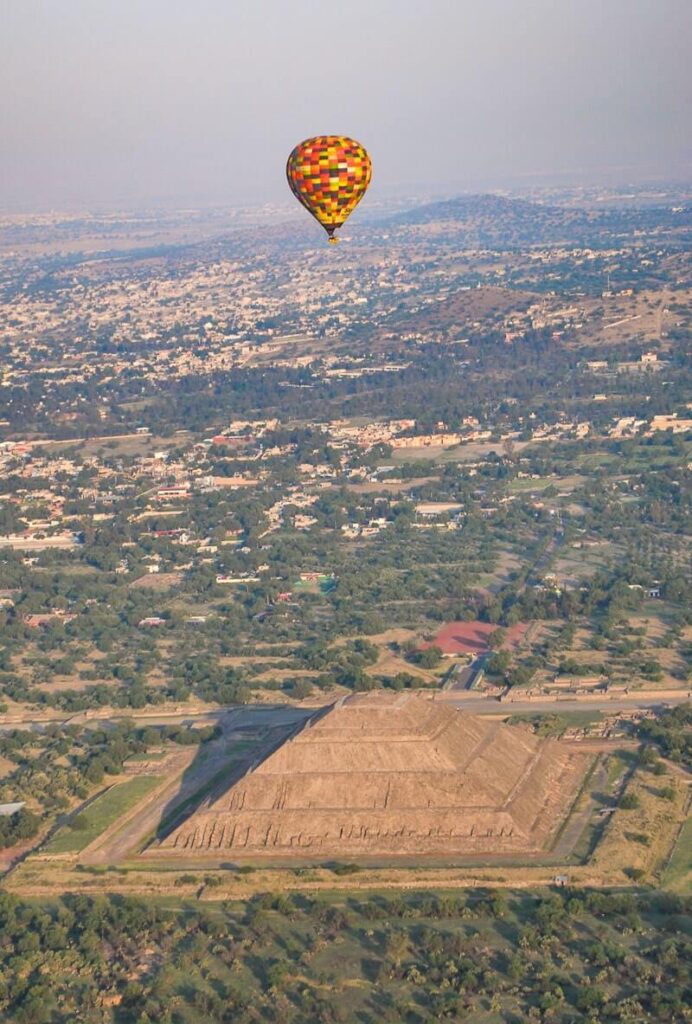
A mystery: Teotihuacan is one of Mesoamerica’s biggest mysteries
The ancient city of Teotihuacan in Mexico is really one of world’s biggest mysteries. And that is because we have no clue about the people that built Teotihuacan, people that lived here, or what led to the collapse of this once-powerful city state. Honestly, we don’t even know the real name of this ancient settlement.
The area around Teotihuacan was settled in somewhere around 400 BCE. Tremendous progress happened between 100 – 250 CE during which many iconic pyramids such as Pyramid of the Sun & Moon were built. The civilization reached its zenith around 400 CE.
In the 700s, the city was pillaged and burned to ashes. It is hard to say what caused the chaos – a local uprising against the elite or an external invasion. But Teotihuacan was abandoned forever after that. No one knows where the ancient Teotihuacanos went. Unlike Mayans and Aztecs who continue to live among us with their habits and practices, Teotihuacanos completely disappeared from the surface of the earth.
In the absence of any written or oral history, the civilization of Teotihuacan was lost to the world!
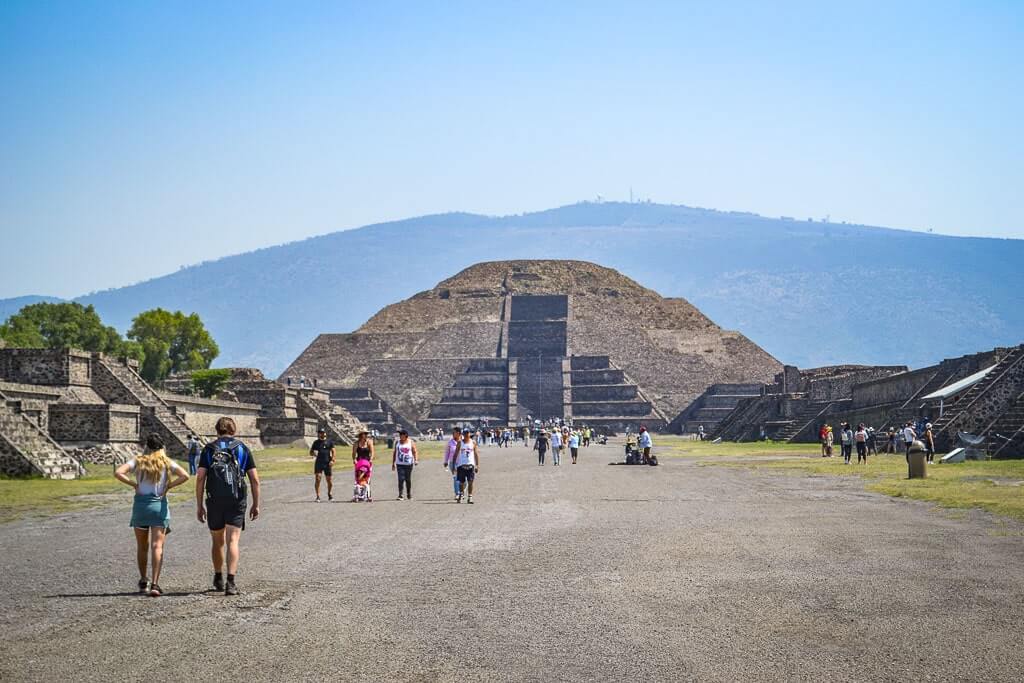
Connection with Aztecs: Teotihuacan was not built by the Aztecs! Just named by them.
Yes, you heard it right. Teotihuacan was built between 100 BC – 400 CE, long before the Aztecs arrived in the Mexico Valley.
Aztecs stumbled upon a ruined city in the northeast of Mexico City in early 1400s. They were clearly impressed and inspired by the massive pyramids, art, and architecture that surrounded them. And decided to name it Teotihuacan or “The City of Gods” in their local language Nauhatl.
The Aztecs went on to claim a common ancestry with the Teotihuacanos and subsequently, adopted many Teotihuacan deities, rituals, and practices.
So, what is abundantly clear is that even though the Aztecs were copiously influenced by the city of Teotihuacan, they never built it.
✦ Pro Tip: If you’re keen to learn more about Aztec history and ruins, check out our guide on the 8 Best Aztec Ruins in Mexico City.
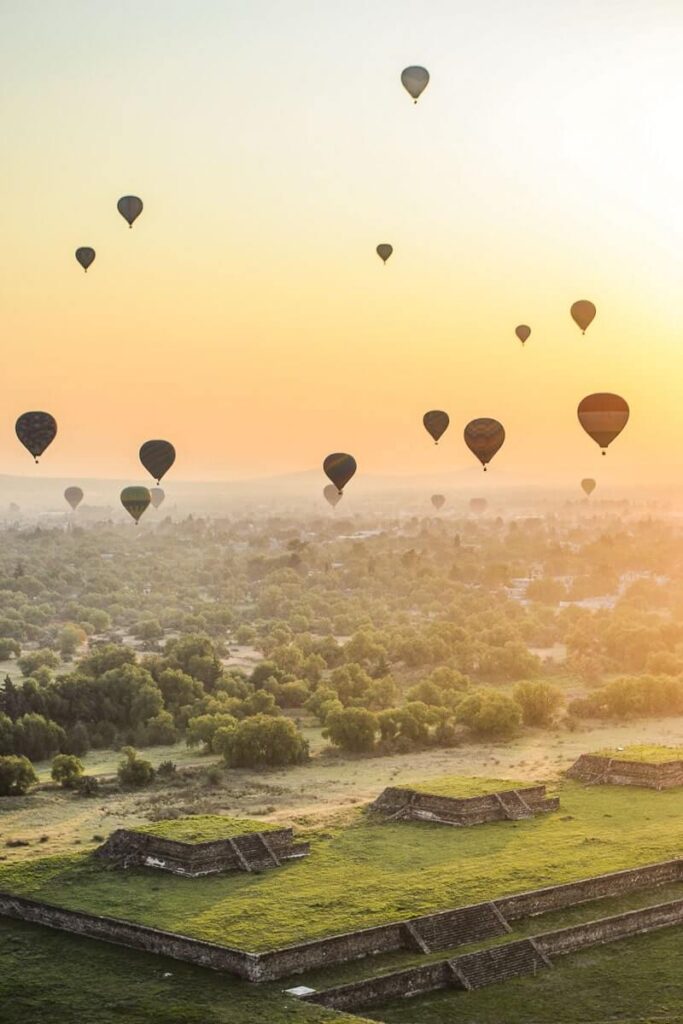
The meaning of Teotihuacan’s name refers to gods
The name “Teotihuacan” is of Nahuatl origin and was given by the Aztecs centuries after the city’s decline. It translates to “The City of the Gods” or “The Place Where Gods Were Born”.
The Aztecs were awed by the ruins of the city they found in the 1400s. They believed such grandeur could only have been the work of divine beings. This sense of awe and reverence led them to name the city Teotihuacan, as they conceived it to be a place where gods might have walked.
Like everything else, the original name of Teotihuacan still remains a big mystery.
Teotihuacan and Tenochtitlan are so so different
Teotihuacan and Tenochtitlan are two significant archaeological sites located in Mexico, each with its unique cultural heritage and historical significance.
The pre-Hispanic City of Teotihuacan, located 30 miles northeast of Mexico City, was established around 400 BCE. Due to the absence of written scripts and oral histories, we still don’t know who the constructors were even though it was the largest city in the pre-Columbian Americas. Famous for its colossal pyramids, the citadel, and the Avenue of the Dead, Teotihuacan was a significant cultural center until its fall in the 8th century.
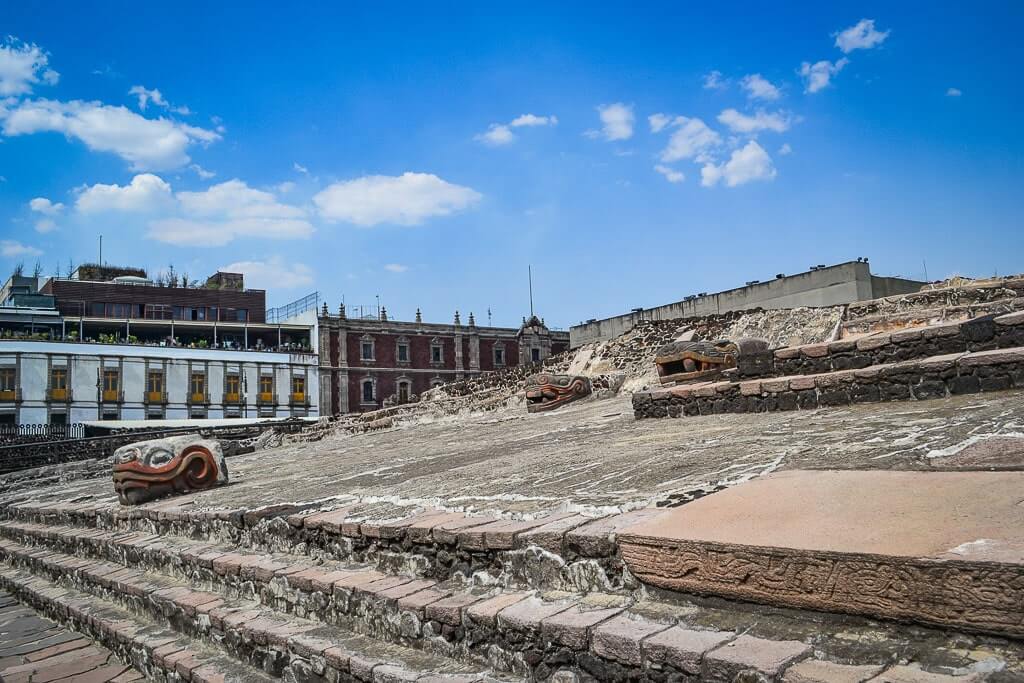
On the other hand, Tenochtitlan, founded by the Aztecs (also known as Mexica) in 1325 CE, was a latecomer compared to Teotihuacan. Situated on an island in Lake Texcoco, now in the heart of Mexico City, it was the capital of the Aztec empire. Tenochtitlan was also admired for its architecture including the Templo Mayor and the canals which served as streets. Tenochtitlan was conquered and destroyed by the Spanish in 1521, marking the end of the Aztec civilization.
📖 Related Read: For additional reading on Mexican pyramids, check out our guide on 7 Fascinating Pyramids in and around Mexico City.
Teotihuacan’s acoustics are fascinating
Teotihuacan boasts a fascinating acoustic phenomenon. The site’s architecture, particularly the stairs of the pyramids, were designed so that sound waves echo off the steps.
When someone claps at the base of these structures, the echo produced mimics the sound of the quetzal. The quetzal is a sacred bird found in many ancient Mesoamerican cultures.
There are chances that this extraordinary acoustic effect was used in religious rituals and ceremonies, thus amplifying the mystical ambiance of this impressive site. For details check out this research paper on tonal response at Teotihuacan.
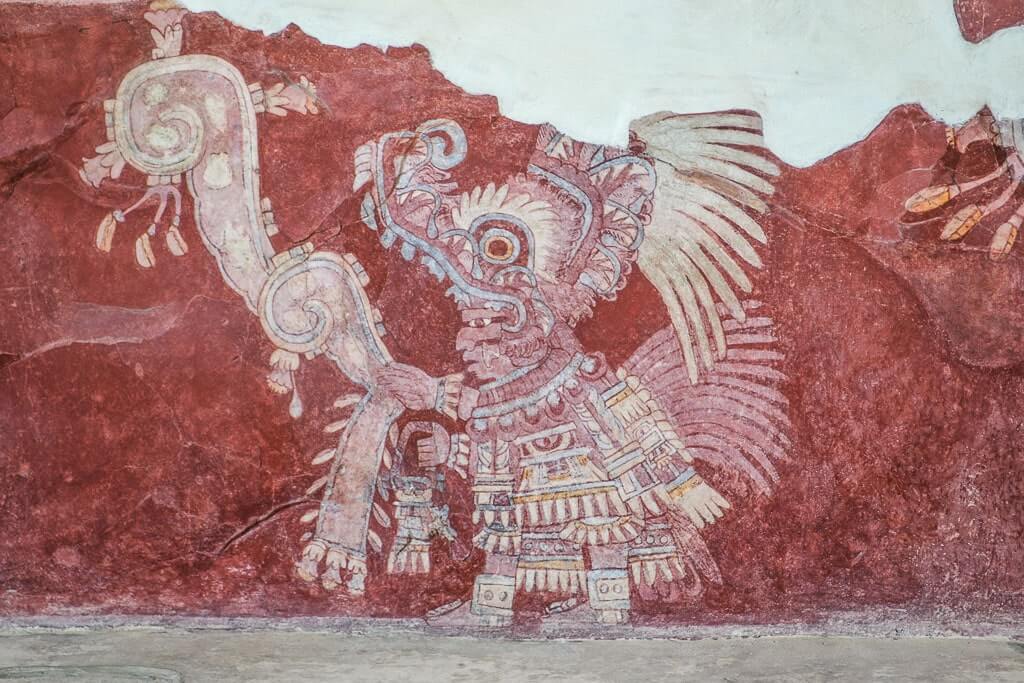
Teotihuacan had a multicultural society
Though it is hard to say for sure, Teotihuacan was probably a multicultural city state. Since people from all over Mesoamerica lived and worked in Teotihuacan, it is quite possible that the city was a huge potpourri of cultures and traditions.
The Teotihuacanos worshipped multiple gods and had numerous complex rituals as is depicted in the colorful murals found on site. Animal and human sacrifice was common. There is plenty of evidence for that in the skeletal remains found at both Pyramid of the Moon and the Temple of Quetzalcoatl.
Furthermore, Teotihuacan placed a high value on craftsmanship. We know that a significant portion of the population engaged in producing obsidian tools, pottery, and other artisan goods.
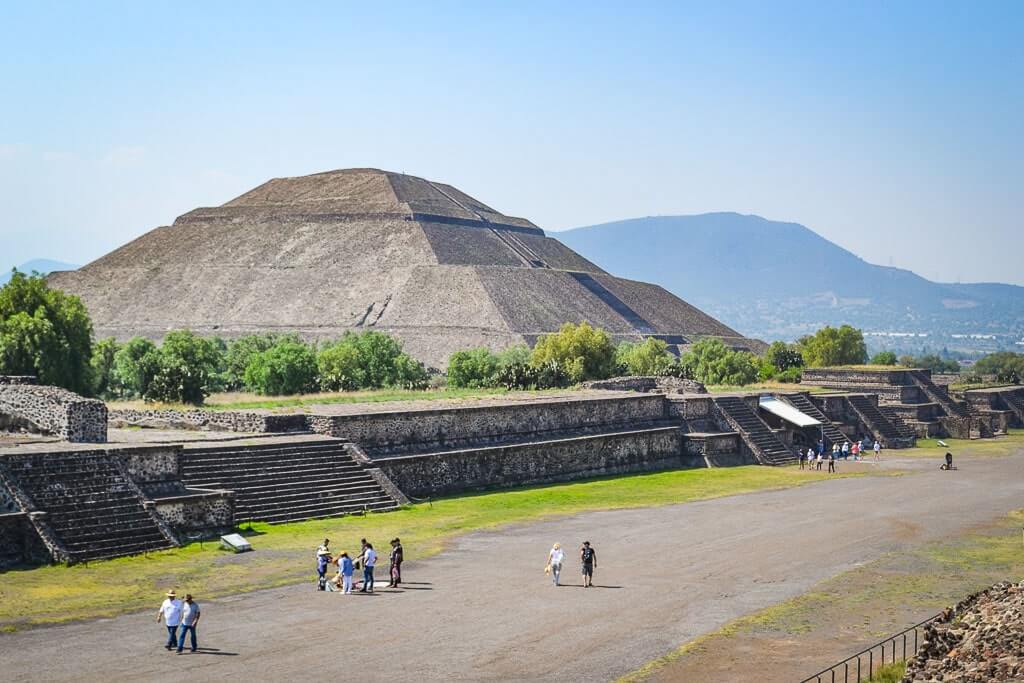
Pyramid of the Sun is one of the tallest in the world
One of the most amazing facts about Teotihuacan is that it is home to one of the tallest pyramids in the world.
The Pyramid of the Sun in San Juan Teotihuacan is the 7th tallest pyramid in the world. Many travel guides out there will tell you that it is the 2nd or 3rd tallest, but that’s not true. According to reliable resources, the Sun Pyramid in Teotihuacan follows 4 pyramids in Egypt, El Mirador in Guatemala, and the Great Pyramid of Cholula in height.
Contrary to what I believed earlier, Temple of Kukulkan at Chichen Itza (79ft) is actually much smaller than Teotihuacan’s Pyramid of the Sun (216ft).
Similarities between Teotihuacan and Chichen Itza are uncanny
Chichen Itza and Teotihuacan are located on two opposite sides of Mexico. The distance between them is nearly 900 miles (1450km). Yet, we see a number of similarities between the two civilizations, some of them outright incredible.
For example, both the cities were astronomically aligned. The position of temples, sacrificial altars, even residential complexes are aligned according to the movement of sun.
However, one thing that is unique to many Mesoamerican civilizations and is especially conspicuous in the ancient cities of Teotihuacan, Chichen Itza, Mayappan, and Uxmal is the presence of a Feathered Serpent God who is very powerful. In Teotihuacan, it is called Quetzalcoatl. In the Mayan culture, it is known as Kukulkan. It will be interesting to find out if the idea (and hence the deity) moved from east to west or vice versa.
✦ Pro Tip: There are several interesting stories about the miraculous descent of Kukulkan every equinox at the main pyramid of Chichen Itza. Read more about these fascinating Chichen Itza tales here.
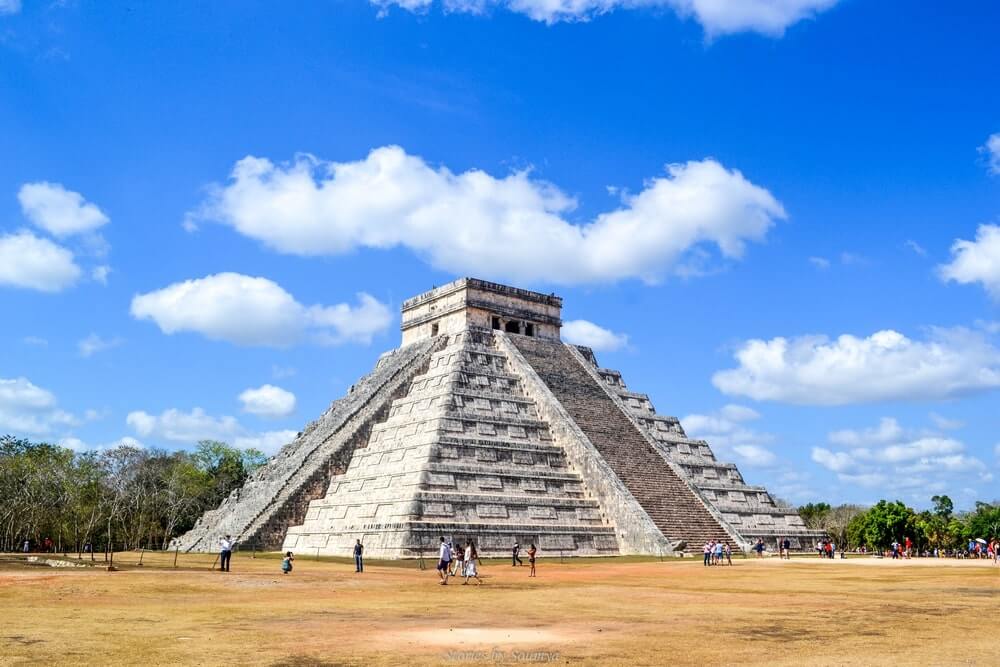
Mural collection of Teotihuacan will blow your mind away
Well, this is something I was not even aware of while planning my visit to Teotihuacan from Mexico City.
But when I got there, I noticed several monuments that had once been adorned with colorful frescoes. Some of these paintings still remain, like the ones in the courtyard and inner rooms of the Palace of Itzpapalotl, the jaguar mural in the alcove between pyramids of the Sun and the Moon, and the ones in the residential complex of Tepantitla.
Additionally, there is a dedicated museum on site for Teotihuacan murals. It is called Beatriz de la Fuente Mural Museum.
Murals in Teotihuacan mainly depict mythical deities, nature, and sacrifices. The image of the Great Goddess from the Tepantitla complex with an elaborate head-dress made up of a flowering tree, birds, and animals makes quite an impression.
Unfortunately, many of these ancient murals were looted/damaged in the early 20th century. A large collection was secretly removed by Harald Wagner in the 1960s and later bequeathed to the Fine Arts Museum of San Francisco. Known as the Wagner Collection, this set is now conserved under a collaborative project with Mexico.
✦ Pro Tip: Want to visit Teotihuacan? Check out this detailed guide on how to plan your Teotihuacan day trip from Mexico City.
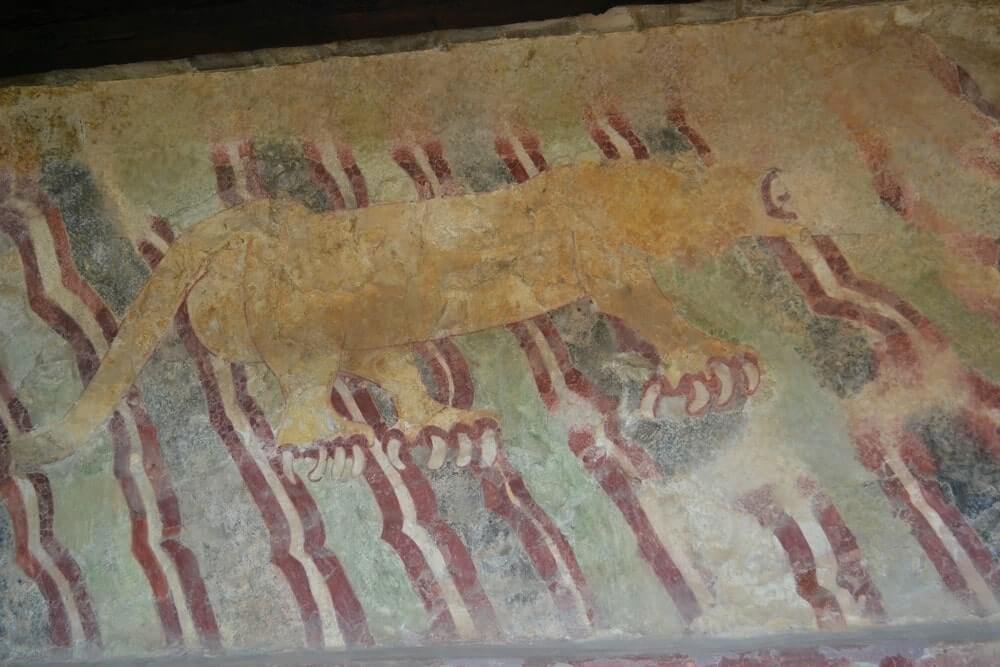
The Teotihuacan script has not yet been deciphered!
Even though Teotihuacanos were skillful painters, they never got around to developing a written script. Or may be they did but we haven’t gotten around to deciphering it yet.
We know very little of the Teotihuacan script except for the fact that it was glyph-based. Researchers postulate that Teotihuacanos could have used the Isthmian script, an ancient writing system in Mesoamerica. The discovery of an Isthmian inscription on a Teotihuacan-style mask supports this assumption.
Unfortunately, the Isthmian script remains undecipherable till date. This is one of the main reasons why we know so less about this illustrious civilization even today.
Main deity at Teotihuacan was a female
Teotihuacan was most probably a polytheistic society but their primary deity could have been a female.
Here, we are referring to the Great Goddess who is often seen on murals with a mythical tree over her head. She is also known as the Spider Goddess sometimes because of the numerous birds and spiders that fly above the tree.
Teotihuacan gods share lot of commonalities and could very well have been predecessors of several Aztec deities. Great Goddess sounds quite similar to the Aztec Goddess, Xochiquetzal. Their Rain God was Tlaloc and Feathered Serpent was Aztec Empire’s Quetzalcoatl. Enough evidence to show that the Aztecs were in awe of the lost kingdom of Teotihuacan.
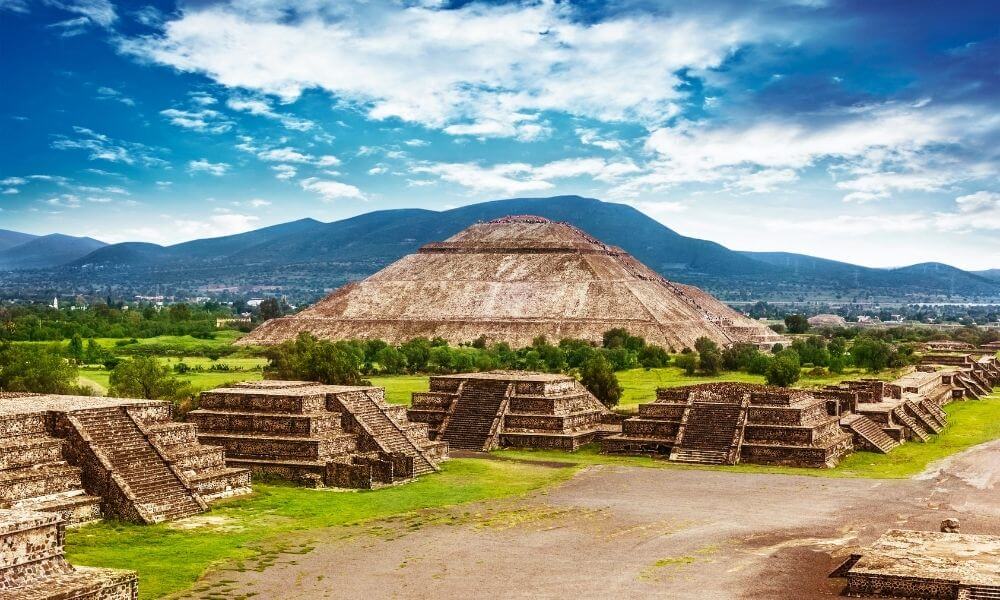
Teotihuacan was once a major exporter of obsidian
When we talk about trade and industry, we know for sure that Teotihuacan was a rich kingdom. Majority of its wealth came from the monopoly that it had on the trade of obsidian (a black-colored semiprecious stone) in the region.
Obsidian was widely used in Mesoamerica in rituals as well as in making tools and weapons. Teotihuacan controlled two large obsidian mines in Central Mexico – the mines of Sierra de las Navajas and Otumba.
Archaeological evidence suggests that trade routes from Teotihuacan extended as far as Southwestern USA in the north to Panama in the south. No doubt, the ancient empire rose to be one of the most powerful in the region.
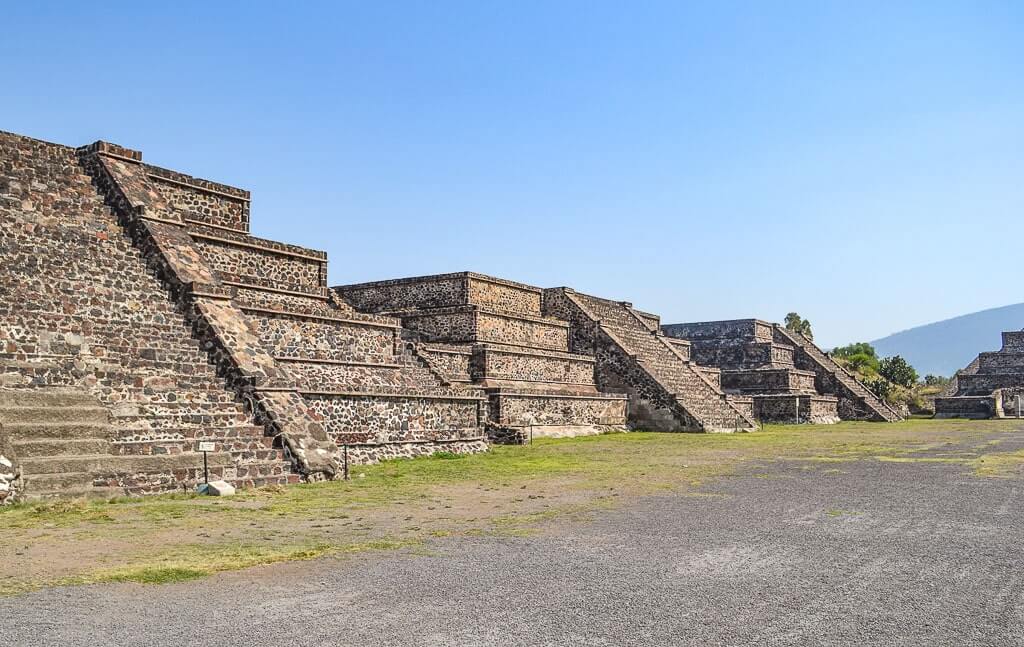
Teotihuacan was Mesoamerica’s first cosmopolitan city
No doubt all that trade led to frequent exchange of ideas, practices, and most importantly, people.
People from all over the region migrated to Teotihuacan to make their fortunes in trade and business. Consequently, Teotihuacan became one big melting pot of cultures – an ancient cosmopolitan city in true sense of the word.
A study by University of California, Berkeley suggests that ethnic groups from Oaxaca, Veracruz, Michoacan, Yucatan, and the Mexico Valley inhabited Teotihuacan.
Multi-ethnicity could be a reason why Teotihuacanos largely disappeared after the collapse of the kingdom in 700 AD. Since there is no evidence of a mass migration, each ethnic group could have gone back to its individual fold thus, leaving no trace of a cohesive Teotihuacan culture.
Secret tunnels have been discovered under the pyramids of Moon & Plumed Serpent
This is probably one of the most fascinating facts about Teotihuacan – the discovery of secret tunnels stashed with treasures. I don’t think it can get any more exciting than this.
Not one but two tunnels have been discovered in Teotihuacan – one under the Pyramid of the Moon and a more recent one in the Citadel, right under the Pyramid of the Feathered Serpent.
Archaeologists have discovered a ton of stuff in the recent excavation – pottery, seashells, statues, precious necklaces, obsidian knives, and wooden figurines. What these tunnels were used for we can only imagine. Maybe this was where men turned into gods once they were buried after being sacrificed. A world where the dead lived after their deaths! We will never know for sure.
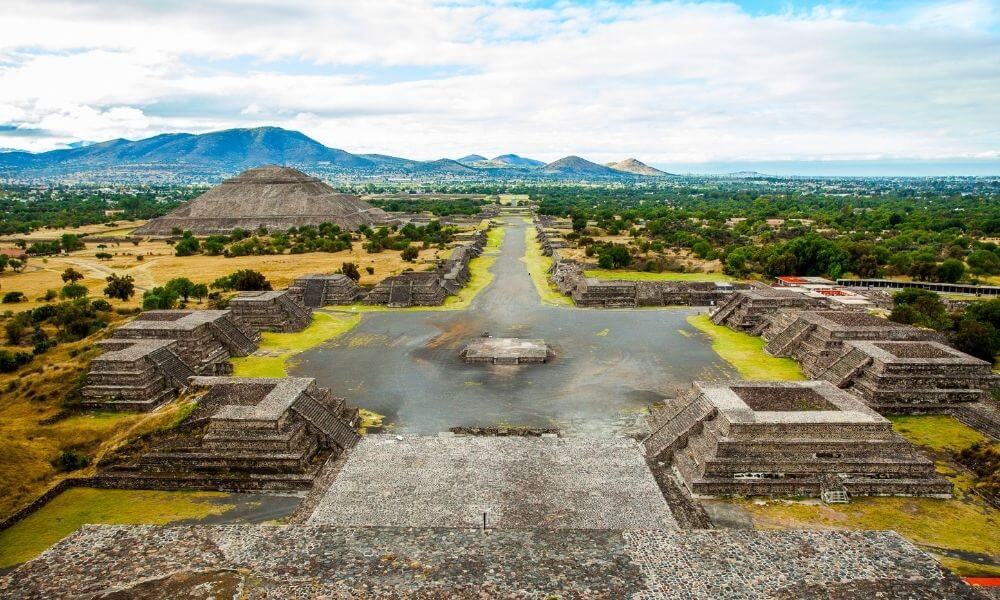
Teotihuacan Facts FAQ
Why is Teotihuacan called the City of Mystery?
Teotihuacan is often referred to as the “City of Mystery” due to the enigmatic nature of its historical background. The ancient city pre-dates the Aztecs and the Mayas, and therefore, much of its history remains shrouded in mystery. The exact identity of its builders, the reasons behind its sudden decline, and the meaning of many of its murals and architectural nuances are all subjects of ongoing research and speculation, hence the nickname.
When was Teotihuacan first built?
The pre-Hispanic City of Teotihuacan is believed to have been established around 400 BCE. It experienced its peak in influence and population during 400 CE, becoming one of the largest urban centers of the ancient world.
Did the Aztecs build Teotihuacan?
Contrary to popular belief, the Aztecs did not build Teotihuacan. Teotihuacan was established around 400 BCE, centuries before the Aztecs came into power. The true creators of the city remain a mystery, as they left no written records about their society. The Aztecs, who arrived in the region around the 1400s, merely found the city abandoned and named it Teotihuacan – “The Abode of Gods”.
When was Teotihuacan discovered?
Teotihuacan was first discovered by the Aztecs in the 1400s. It was well-known to the Spanish conquistadors during their arrival in the 1500s. However, archaeological excavation of Teotihuacan began in earnest in the late 19th century (in the 1860s to be precise). Significant advancements in the understanding of the site and major restorations of the pyramids were made in the 20th century.
Who lived in Teotihuacan?
Teotihuacan, an ancient Mesoamerican city, was inhabited by a multi-ethnic mix of people from various regions around Mexico including the Mayans, the Mixtecs, the Zapotecs, and the Olmecs. At its zenith, the city may have housed over 200,000 people, making it one of the largest cosmopolitan cities of the ancient world.
Is Teotihuacan Aztec or Mayan?
Teotihuacan is neither Aztec nor Mayan. This ancient city was built and inhabited by a civilization known as the Teotihuacanos, who predate both the Aztec and Mayan civilizations. By the time the Aztecs discovered the city, it was already in ruins. The Aztecs named it “Teotihuacan,” which translates to “the place where the gods were created.”
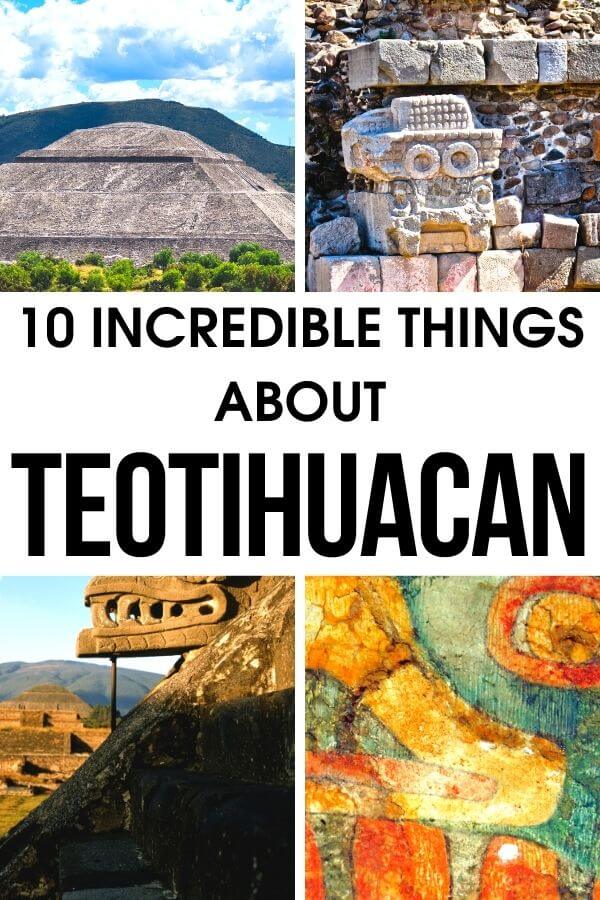
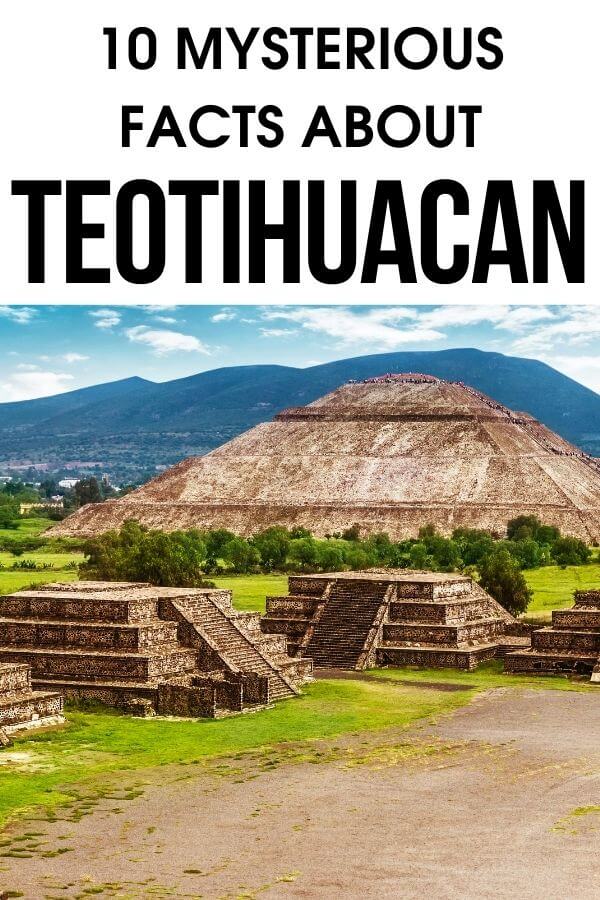
What is Teotihuacan famous for?
Teotihuacan is famous for the three massive pyramids that it is home to. One of them, Pyramid of the Sun, ranks the 7th largest in the world. The city is also known worldwide for its stunning collection of murals that once adorned historic temples and residential complexes.
Who created Teotihuacan?
It is hard to say who created Teotihuacan because origins of this once-powerful city still remain a mystery. Some researchers speculate that indigenous Totonac people of Mexico founded the state of Teotihuacan. Others suggest that migrants from all over Mesoamerica came together in Teotihuacan and gave rise to a prosperous city.
What is unique about Teotihuacan?
Teotihuacan is unique because it is different from other ancient Mesoamerican cities. It had a multi-ethnic society where people worshipped many gods, was world’s largest exporter of obsidian tools, and grew to be one of the most powerful cities in its heyday. Yet, it vanished without a trace leaving us only the ruins of Teotihuacan. Even today, it remains one of the most mysterious civilizations in the world.
Who destroyed Teotihuacan?
Teotihuacan was destroyed around 700 AD possibly due to an internal uprising of the working class against the ruling elite. There is evidence that suggests that large scale looting and burning of the city happened in the 700s after which Teotihuacan never recovered. Scholars hypothesize this could have been due to an internal rift in the society leading to a 8th century civil war.
What caused Teotihuacan decline in the seventh century?
Even though it is hard to say what exactly caused Teotihuacan’s decline in the 7th century, there is a possibility that it happened because of a falling-out between the elite and working classes of the society. This led to looting and burning of the city and eventually, a lot of chaos after which the city was abandoned forever.
Which God did the Teotihuacan worship?
People of Teotihuacan worshipped many gods including Tlaloc, the God of Rain, and Quetzalcoatl, the Feathered Serpent. However, it seems like the most revered deity in Teotihuacan was a mythical goddess known as the Great Goddess or Spider Goddess.
What is Teotihuacan made of?
Many buildings and monuments of Teotihuacan were built of tezontle, a coarse volcanic rock that is commonly found in the Valley of Mexico.
How long did Teotihuacan last?
Teotihuacan lasted more than 800 years with its golden period being between 250 – 700AD.
Why does the city of Teotihuacan matter?
The city of Teotihuacan matters because it is an important element to understanding Mesoamerican history. This Pre-Hispanic city was once a sprawling capital with a monopoly in obsidian trade, multi-ethnic culture, and enviable architectural abilities. Yet, it disappeared without a trace as if it had never existed. Learning about Teotihuacan will help us dig deeper into the rise and fall of civilizations as well as gain a holistic understanding of Mesoamerican power centers in ancient times.
What is the difference between Teotihuacan and Tenochtitlan?
The differences between Teotihuacan and Tenochtitlan are plenty. Teotihuacan is an ancient city (in ruins) located about 30 miles from Mexico City. On the other hand, Tenochtitlan refers to the capital city of Aztecs (completely demolished by the Spanish conquistadors in the 16th century) located in the Historic Center of Mexico City. Teotihuacan was established by an unknown group of people in the 1st century but Tenochtitlan was founded by the Aztecs in the 14th century. While Teotihuacan still remains a mystery with an undecipherable script and a patchy timeline, our knowledge of Tenochtitlan is relatively complete.
What does Teotihuacan mean in Nauhatl?
Teotihuacan means “the abode of gods” in Nauhatl, the language spoken by Aztecs.
Loved our Teotihuacan facts guide? Pin it for later!
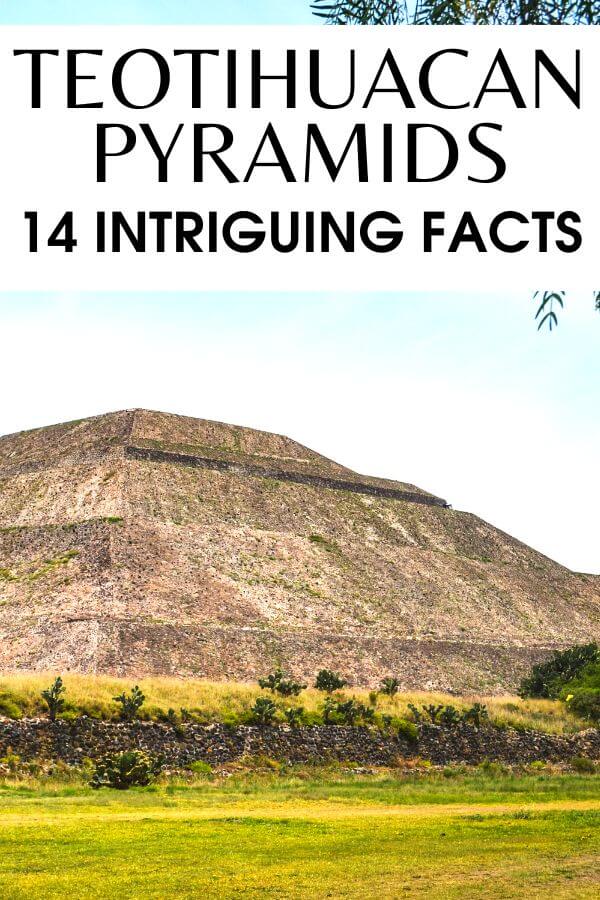

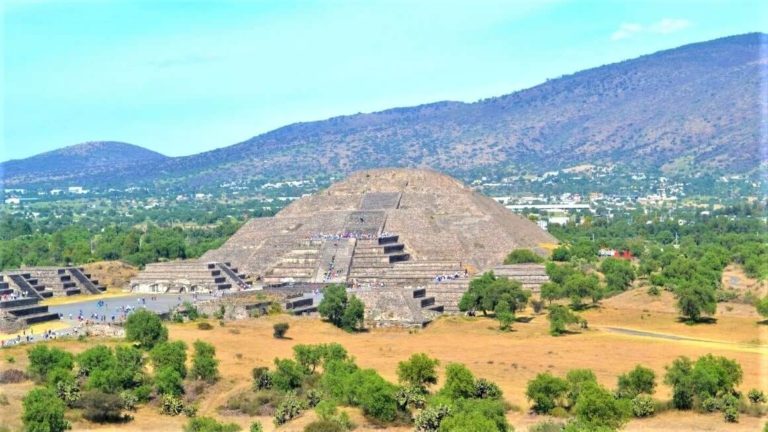
The echo from clapping that sounds like a quetzal bird only happens at the Temple of Kulkulkan in Chichen Itza, which is hundreds of miles away from Teotihuacan.
Sorry, that’s not true. The singing of quetzal has been noticed across historic sites in Mexico including Chichen Itza and Teotihuacan. The sounds of Chichen Itza are definitely more popular because it is more touristy than Teotihuacan but you can hear them in front of the Citadel in Teotihuacan also. You can read more about the quetzal sound of Teotihuacan in this research paper published in The Journal of the Acoustical Society of America. I have also referenced it in my article.
To understand and possibly translate the scriptures, we must return to nature. The mind must dimensionally think along the rooted origins between human and nature. Technology is a certain disconnection.
The harmonic order of sustainable calibration between the two. The respect for Mother Nature and the wisdom that cultivates from her. Intelligence is not primitive. They ability to adapt to change is intelligence, therefore in order to understand the scriptures, we must teleport our way of thinking to a harmonic allignment from past to present and vise versa . Behavior is tangible and as concrete as a building block from any perspective of reality. A balance of temperature, distance and the utopian way of life.